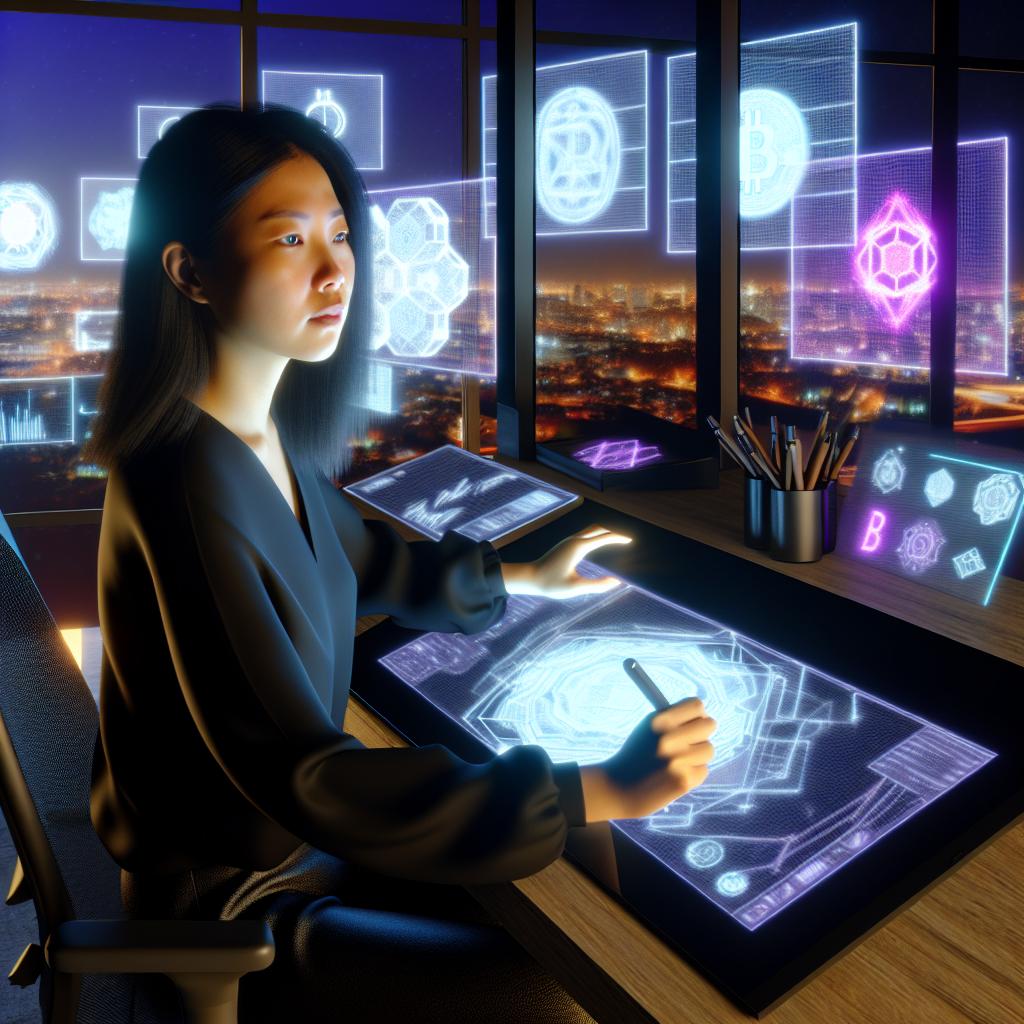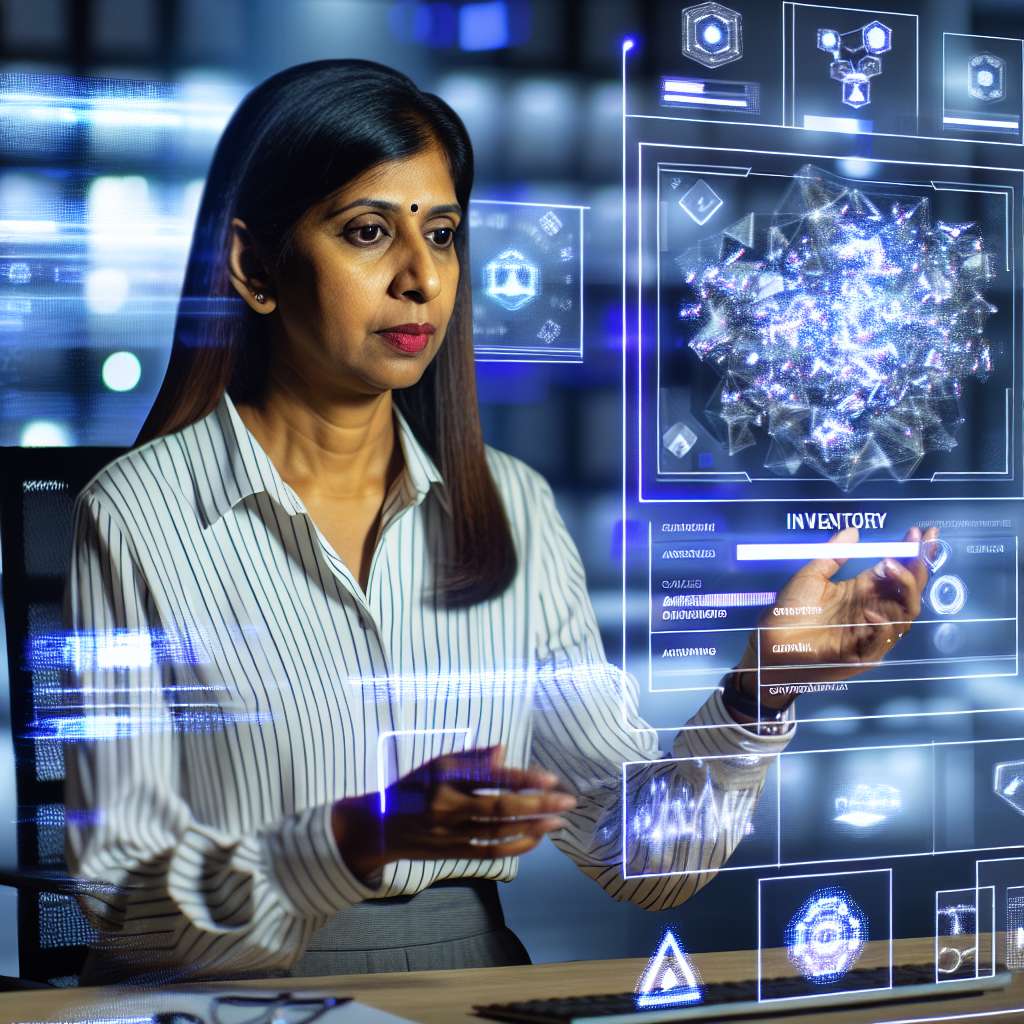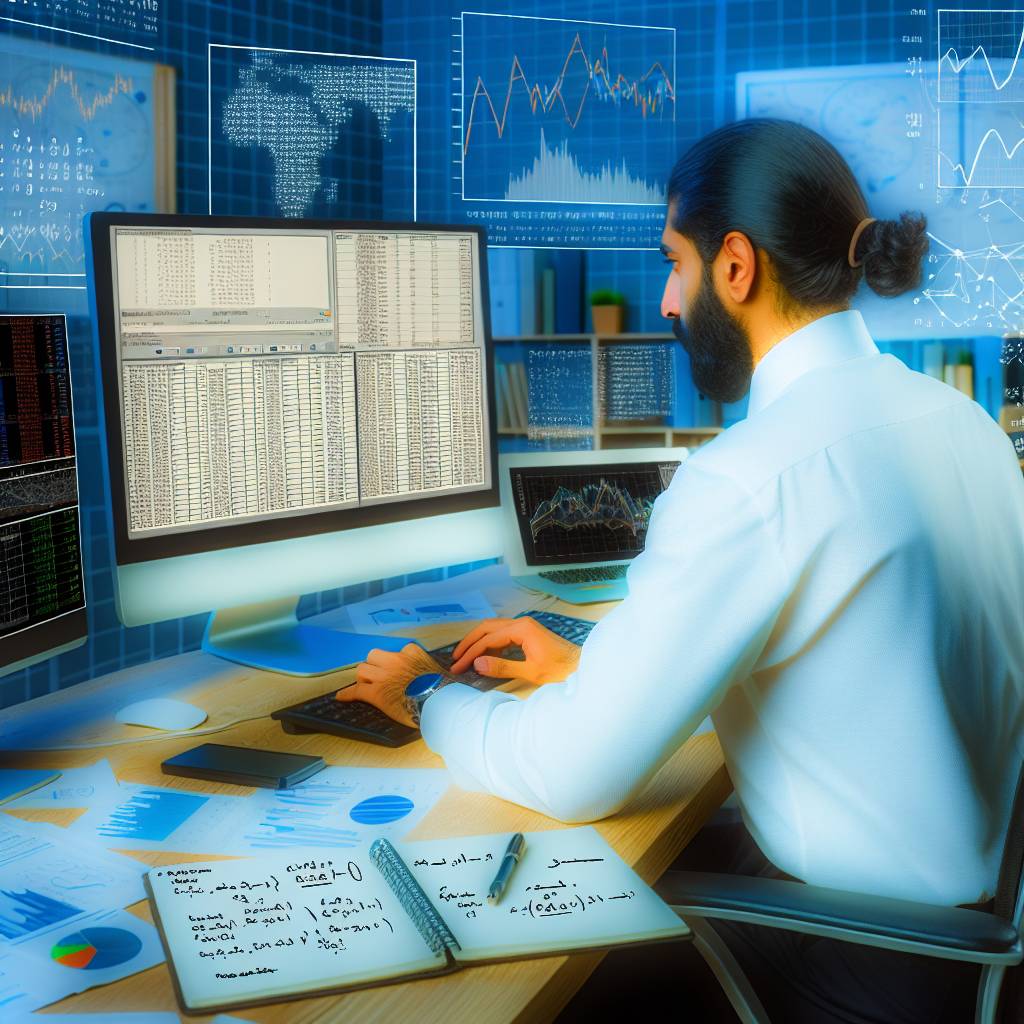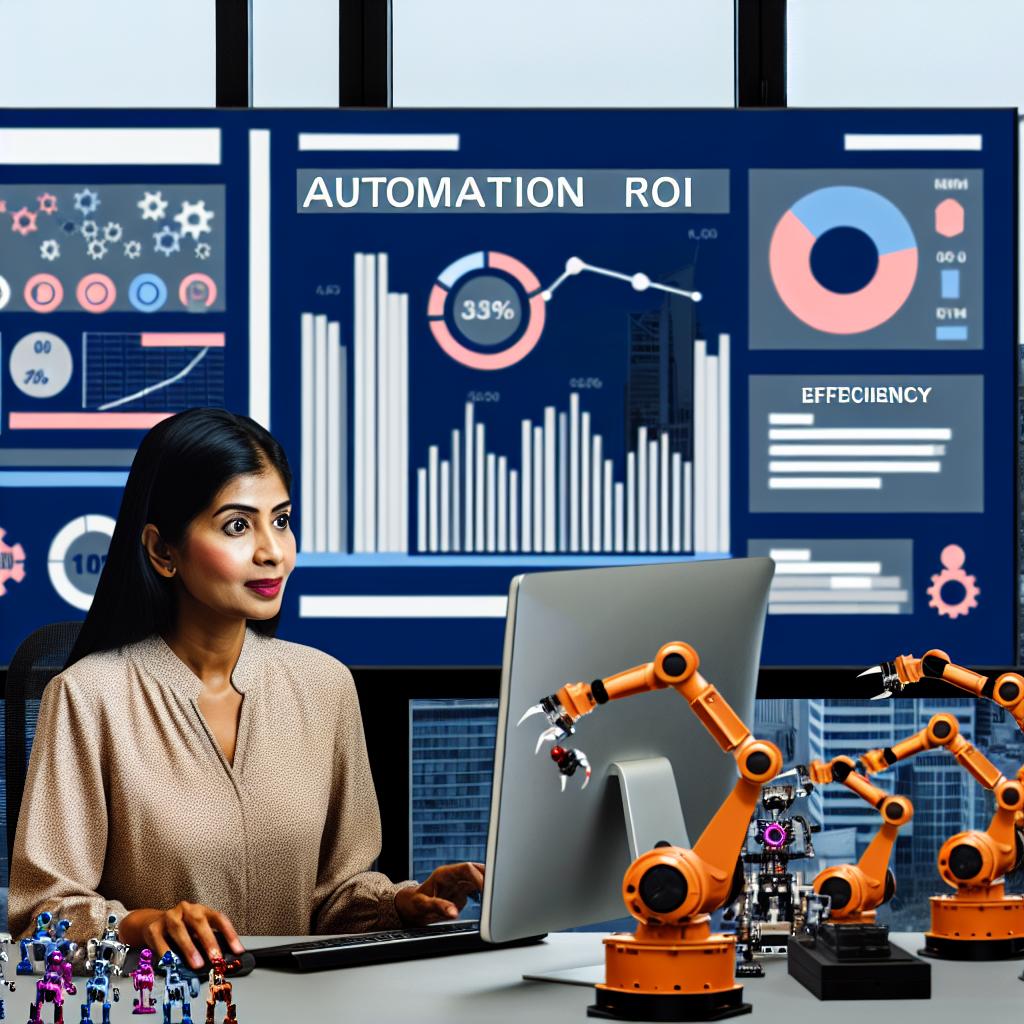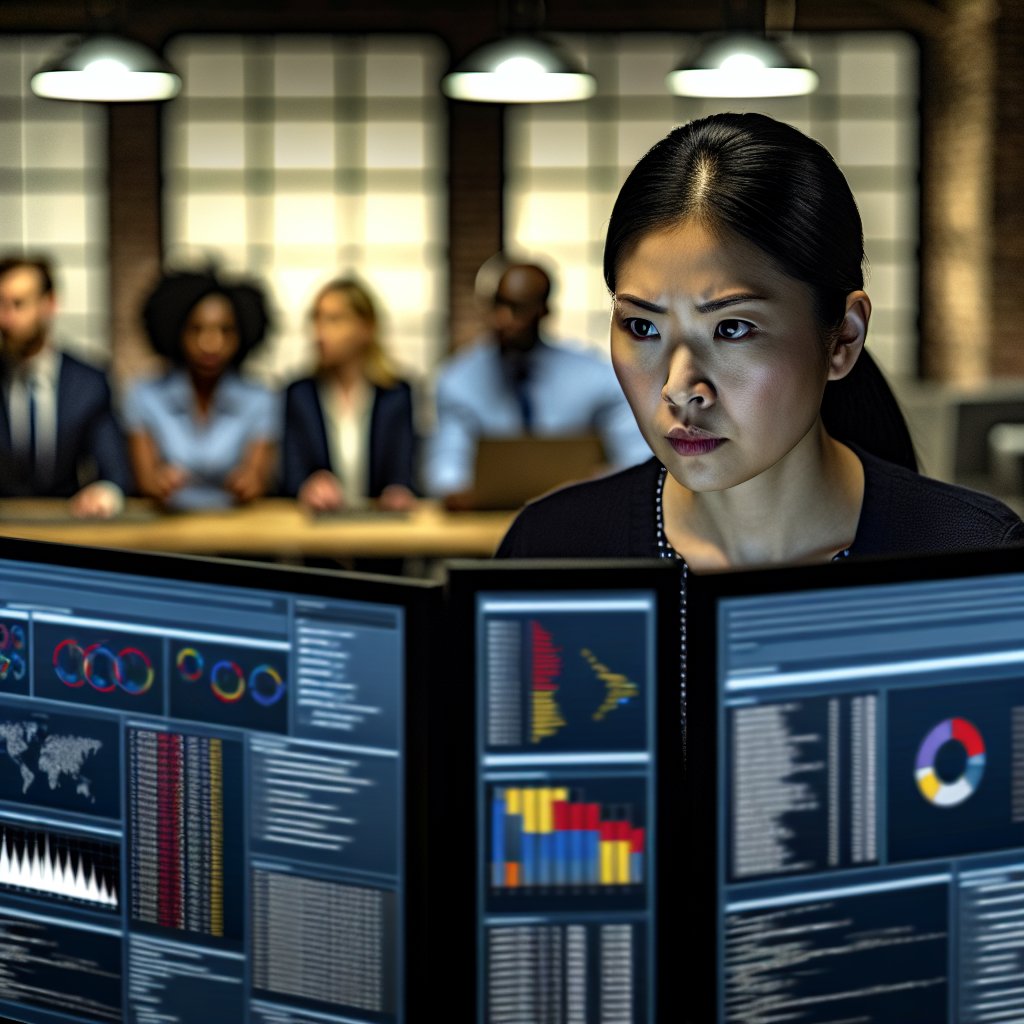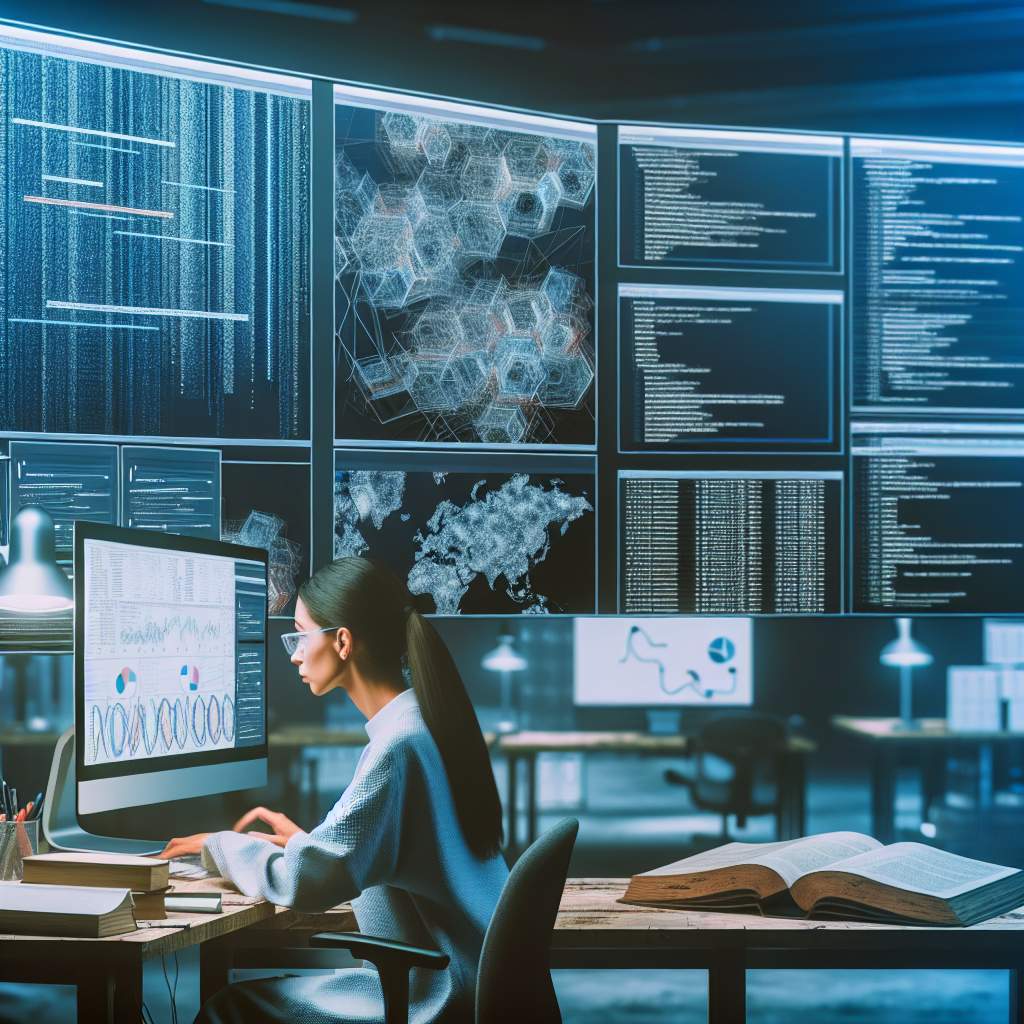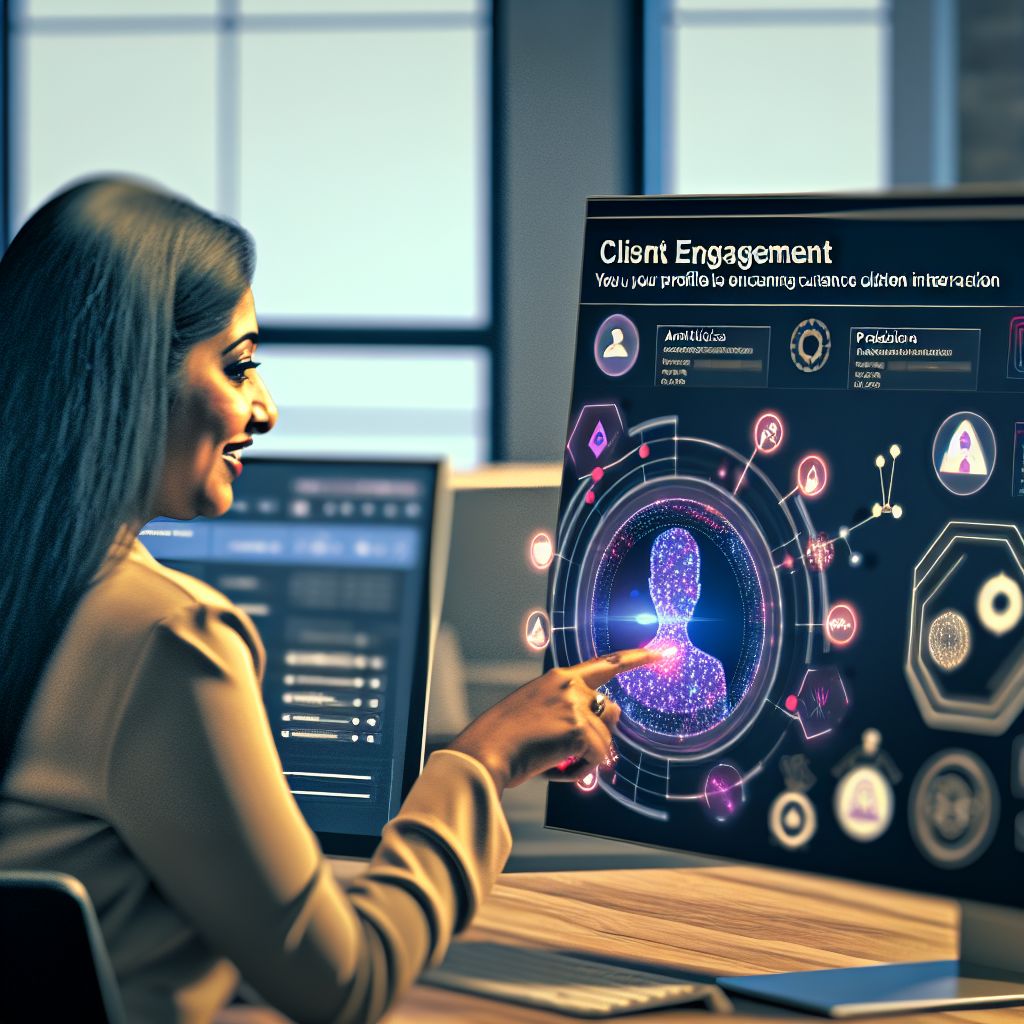Introduction
Definition of AI-Powered Video Editing
AI-powered video editing refers to using artificial intelligence algorithms to automate the video editing process.
These tools analyze raw footage, identify key moments, and apply enhancements automatically.
This innovation reduces the video editing time significantly and enhances creative possibilities for editors.
Historical Context: Evolution of Video Editing Technology
The journey of video editing has transformed dramatically over the decades.
Early video editing relied heavily on manual processes, requiring extensive time and technical skill.
The introduction of non-linear editing systems in the 1990s revolutionized the industry, allowing editors to access any part of footage instantly.
As technology advanced, software like Adobe Premiere and Final Cut Pro made video editing more accessible.
However, the advent of AI has taken this evolution to new heights.
Importance of Exploring the Impact of AI on Video Editing
Exploring the impact of AI on video editing is essential for understanding its potential.
AI enhances efficiency by streamlining mundane tasks, such as sorting through hours of footage.
It also facilitates creativity by suggesting edits based on scene settings, audio cues, and visual aesthetics.
Moreover, AI-powered tools can adapt to individual editing styles, allowing for personalized experiences.
This adaptability opens a world of possibilities for both amateur and professional editors.
Understanding these advancements can empower content creators to leverage AI tools effectively.
Embracing AI in video editing not only saves time but also allows for the exploration of innovative storytelling techniques.
Staying informed about these trends is crucial as the landscape of video production continues evolving.
Therefore, the AI-powered video editing revolution marks a significant milestone in the creative industry.
By automating tedious tasks, AI enables editors to focus on storytelling and artistic expression.
As technology continues to advance, the future of video editing looks brighter than ever.
The Role of AI in Video Editing
Explanation of AI and its Applications in Video Production
Artificial Intelligence (AI) has transformed various industries, and video production is no exception.
AI refers to the ability of machines to perform tasks that typically require human intelligence.
These tasks include learning, reasoning, problem-solving, and understanding natural language.
In video production, AI applications enhance efficiency and creativity.
Below are some significant applications of AI in video production:
- Automated Editing: AI algorithms can analyze footage to determine the best cuts and transitions.
- Content Creation: AI tools can generate video content, helping creators streamline their work.
- Color Correction: AI can automatically adjust color settings for consistency across clips.
- Audio Enhancement: AI algorithms can clean up soundtracks and dialogue, enhancing overall audio quality.
- Facial Recognition: AI can identify individuals in the footage, making it easier to catalog scenes.
Overview of Machine Learning and Neural Networks
Machine learning (ML) is a subset of AI that focuses on building systems that learn from data.
It enables computers to improve their performance on tasks through experience.
In video editing, machine learning empowers software to recognize patterns and make predictions, significantly transforming the editing process.
Neural networks are a specific type of machine learning model inspired by the human brain.
They consist of interconnected nodes that process information.
In video editing, neural networks can:
- Enhance Object Detection: Help identify objects or individuals in footage more accurately.
- Generate Natural Language Descriptions: Create textual summaries or scripts based on visual content.
- Improve Image Quality: Upscale and improve resolution through sophisticated algorithms.
- Perform Scene Detection: Segment videos into relevant scenes or chapters automatically.
These technologies enable faster and smarter decision-making processes, allowing editors to focus on creative aspects rather than repetitive tasks.
How AI Analyzes Footage for Better Editing Decisions
AI plays a crucial role in analyzing raw footage, providing editors with insights that can improve their editing decisions.
Here’s how this analytical process works:
- Footage Ingestion: AI begins by ingesting the raw footage. It can process various formats, reducing the time editors spend preparing clips.
- Metadata Extraction: AI extracts metadata from the footage, including timestamps, camera angles, and shot types. This critical information offers context for editing decisions.
- Content Analysis: AI analyzes the footage for key elements. It identifies scenes, people, objects, and even emotions displayed on screen. This process uses advanced algorithms powered by machine learning.
- Visual Quality Assessment: AI assesses video quality, recognizing issues such as blurriness, poor lighting, or unwanted artifacts. It provides recommendations for corrections.
- Editing Suggestions: After analysis, AI generates editing suggestions using its findings. Editors receive recommendations for optimal cuts, transitions, or overlays.
- Automated Highlight Reels: For sports or event footage, AI can create highlight reels by identifying exciting moments automatically.
- Feedback Loop: AI learns from editors’ choices, improving its suggestions over time. This iterative process enhances future editing workflows.
The incorporation of AI into video editing significantly optimizes the post-production process.
Editors can now work with greater speed and accuracy.
We Design & Develop Websites, Android & iOS Apps
Looking to transform your digital presence? We specialize in creating stunning websites and powerful mobile apps for Android and iOS. Let us bring your vision to life with innovative, tailored solutions!
Get Started TodayBenefits of AI-Powered Video Editing
AI-powered video editing offers several notable benefits.
Some of these advantages include:
- Speed: AI accelerates the editing process, saving hours of manual work.
- Cost-Effectiveness: Reducing the labor required for editing can lead to significant cost savings.
- Consistency: AI helps maintain visual and audio consistency throughout projects.
- Enhanced Creativity: By automating routine tasks, editors can focus on creative aspects, leading to more innovative content.
- User-Friendly Interfaces: Many AI tools come with intuitive designs, making them accessible to beginners.
As the technology continues to evolve, more artists and creators are integrating AI-powered tools into their workflows.
Challenges and Considerations
Despite the numerous benefits, integrating AI into video editing presents challenges.
Here are some common considerations:
- Quality Control: While AI can make suggestions, human oversight is essential to ensure creativity and quality.
- Learning Curve: Learning to use new AI tools can pose a challenge for some editors.
- Data Privacy: Footage may contain sensitive information. Handling data privacy with AI tools is critical.
- Dependency Risk: Over-relying on AI tools may hinder the development of essential editing skills.
Addressing these challenges is essential for maximizing the benefits of AI in video editing.
As technology develops, the landscape will continually evolve.
The role of AI in video editing revolutionizes how creators approach the post-production stage.
AI’s ability to analyze footage, suggest edits, and automate time-consuming tasks enhances editing workflows.
As AI technology evolves, the future of video editing promises to be more efficient, creative, and exciting, offering endless possibilities for creators.
Read: Master Viral Giveaways with Advanced API Integrations and Analytics
Key Features of AI-Powered Editing Tools
The advent of AI-powered video editing tools has revolutionized the way content creators approach their craft.
These tools leverage machine learning algorithms to streamline and enhance the editing process, making it faster and more efficient.
Understanding the key features of these modern solutions can help editors maximize their productivity and creativity.
Auto-Editing Capabilities: Selecting the Best Shots
One of the standout features of AI-powered editing tools is their auto-editing capabilities.
Here’s how they work:
- Intelligent Shot Selection: AI algorithms analyze raw footage and automatically select the best clips based on various quality metrics.
- Scene Changes Detection: The tools recognize transitions and scene changes, promoting smoother cuts.
- Highlight Generation: Users can quickly create highlight reels without spending hours combing through footage.
- Event Recognition: The software identifies key moments, such as celebrations or reactions, ensuring these are included in final edits.
This auto-editing feature saves time and effort, allowing creators to focus on storytelling rather than tedious clip selection.
Scene Recognition and Tagging
Another remarkable function of AI editing tools is their ability to recognize and tag different scenes.
This capability enhances organization and accessibility.
Here are key aspects of scene recognition:
- Automated Scene Detection: The AI identifies distinct scenes, allowing for effortless navigation through large video files.
- Metadata Tagging: Tags help categorize video elements, making searching easier in the future.
- Thematic Categorization: The AI can group similar scenes based on themes or subjects, streamlining the editing process.
- Smart Indexing: Indexing assists editors in finding specific clips quickly, improving workflow efficiency.
With scene recognition and tagging, creators can locate the perfect footage swiftly, dramatically reducing editing time.
Enhancing Audio Quality and Background Noise Reduction
Great visuals require equally compelling audio.
Fortunately, AI-powered tools excel in enhancing audio quality.
Here are some ways they achieve this:
- Noise Reduction: AI algorithms actively filter out background noise, improving the overall audio experience.
- Volume Leveling: The software balances audio levels throughout the video, ensuring consistency.
- Audio Enhancement: AI adds clarity and depth to dialogues and sounds, providing a more immersive experience.
- Automatic Syncing: The tools can automatically synchronize audio with video, avoiding manual adjustments.
As a result, creators can deliver polished videos that resonate better with their audience through impeccable audio quality.
Automatic Color Grading and Enhancement
Color grading is a crucial element of video production that shapes the viewer’s experience.
AI tools simplify this process with automatic color grading.
Here’s a glimpse of their capabilities:
- Real-Time Color Correction: AI analyzes footage and immediately suggests color corrections.
- Style Matching: Users can apply color grading styles from reference images, ensuring visual consistency.
- Adaptive Enhancements: The AI adapts enhancements based on the specific requirements of each scene, maintaining the footage’s overall integrity.
- Refined Color Palettes: The tools offer pre-set palettes for various moods, making it easier to create desired atmospheres.
With advanced color grading and enhancement features, creators can maintain high production values with minimal effort.
AI-powered video editing tools put the power of advanced features into the hands of creators, enabling them to work more efficiently and effectively.
These technologies save time and streamline workflows, allowing video editors to focus on creative aspects rather than technical hurdles.
The combination of auto-editing, scene tagging, audio enhancement, and color grading transforms raw footage into polished videos in mere minutes.
As these tools continue to evolve, they will likely reshape the landscape of video editing, making advanced production accessible to everyone.
Read: Revolutionizing Virtual Events: Cutting-Edge Tools for Ultimate Engagement
Benefits of AI Video Editing
Time Efficiency: Transforming Hours of Work into Minutes
One of the most significant advantages of AI video editing is time efficiency.
We Design & Develop Websites, Android & iOS Apps
Looking to transform your digital presence? We specialize in creating stunning websites and powerful mobile apps for Android and iOS. Let us bring your vision to life with innovative, tailored solutions!
Get Started TodayTraditional video editing can require countless hours.
Editors often spend long nights cutting footage and adjusting audio levels.
AI tools streamline this process remarkably.
They automate repetitive tasks and minimize manual labor.
For instance, AI can analyze raw footage and identify the best clips.
It can even match these clips with suitable background music.
Furthermore, AI-powered software can assist in color correction.
This feature saves editors hours that would otherwise be spent refining each scene.
These tools can also suggest edits based on pacing and style.
With AI, creators can complete projects in record time.
The speed allows for quick turnarounds, especially vital in fast-paced environments.
AI reduces the mundane tasks that take up precious editing time.
As a result, editors can focus on creative aspects of their projects.
With AI assistance, the post-production process becomes faster and more efficient.
Delivering content faster can enhance visibility and engagement with audiences.
This efficiency ultimately leads to higher productivity levels.
Cost Effectiveness for Filmmakers and Content Creators
The cost-effectiveness of AI video editing cannot be overlooked.
Hiring skilled video editors can be expensive, particularly for startups.
Many new filmmakers and content creators work with tight budgets.
AI tools present a budget-friendly solution for these creators.
Instead of hiring a full editing team, individuals can utilize AI software.
This software offers many features typically provided by human editors.
For example, AI can perform basic editing functions, such as trimming and slicing.
It can also enhance audio quality and stabilize shaky footage.
By reducing reliance on professional services, creators can cut costs significantly.
Moreover, subscription-based AI editing platforms often provide a variety of tools.
These platforms can be more affordable than hiring a full-time editor.
Such savings allow creators to reallocate resources to other areas of their projects.
Whether it’s investing in equipment or marketing, the financial flexibility is invaluable.
Enhanced Creativity: Allowing Creators to Focus on Storytelling
AI video editing significantly enhances a creator’s ability to focus on storytelling.
When time-consuming tasks are automated, editors have more room for creativity.
They can dedicate their efforts to developing impactful narratives rather than getting bogged down in technical details.
This shift is crucial in content creation, where storytelling drives engagement.
AI tools can also inspire creativity in unexpected ways.
For instance, many AI-driven platforms provide creative suggestions.
We Design & Develop Websites, Android & iOS Apps
Looking to transform your digital presence? We specialize in creating stunning websites and powerful mobile apps for Android and iOS. Let us bring your vision to life with innovative, tailored solutions!
Get Started TodayThey encourage experimentation by proposing different sequences or visual styles.
This can push creators out of their comfort zones, fostering innovative storytelling techniques.
Additionally, AI can help analyze viewer preferences.
Understanding what audiences enjoy can inform better content creation decisions.
With this insight, creators can tailor their projects to meet audience expectations.
The combination of technological assistance and creative freedom breeds unique and engaging stories.
Accessibility for Non-Professionals and Beginners
AI video editing makes editing accessible for non-professionals and beginners.
Historically, video editing has been viewed as a specialized skill.
Many individuals felt intimidated by complex software.
AI-powered solutions have changed this perception dramatically.
Now, even those with minimal experience can create high-quality content.
User-friendly interfaces make these AI tools easy to navigate.
Many platforms offer drag-and-drop functionality.
This simplicity encourages exploration and experimentation among novice editors.
Tutorials and guided workflows further aid those new to video editing.
Moreover, the affordability of AI tools lowers the barrier to entry for aspiring content creators.
Many AI editing software options provide free trials or affordable subscriptions.
This accessibility empowers more people to tell their stories, regardless of experience level.
With the rise of platforms like YouTube and TikTok, everyone is now a potential content creator.
As a result, the democratization of video editing allows voices from all walks of life to be heard.
Everyone can create compelling narratives that resonate with different audiences.
It fosters diversity in storytelling, enriching the overall landscape of content creation.
In fact, the benefits of AI video editing are immense.
From boosting efficiency and cutting costs to enhancing creativity and accessibility, AI transforms the editing process.
These advantages empower filmmakers and amateur creators alike.
In an age where content is king, AI editing tools revolutionize how we experience storytelling.
Embracing these advancements will shape the future of video content creation.
Read: AI-Powered Writing Tools Revolutionizing Content Creation

Leading AI Video Editing Software and Tools
Overview of popular AI-powered editing platforms
The rise of AI technology has transformed video editing.
Various platforms now leverage AI to streamline the editing process.
Here’s a look at some popular AI video editing tools:
- Adobe Premiere Pro: Adobe integrates AI through Adobe Sensei. It offers features like auto-reframe and scene edit detection.
- Final Cut Pro: Apple’s editing software uses AI to enhance color correction and sound syncing.
- Filmora: This user-friendly tool employs AI to create smart scene detection and audio ducking.
- Magisto: Magisto utilizes AI to automate editing and storytelling, making it great for beginners.
- InVideo: InVideo allows users to create videos by leveraging AI-driven templates and features.
- Kapwing: Kapwing enhances editing with tools for subtitling, resizing, and video creation.
These platforms cater to varied skill levels and project types.
Each platform provides unique features.
Comparative analysis of features
When evaluating AI video editing software, it’s crucial to consider key features.
Here’s a comparative look at vital elements that differentiate these tools:
We Design & Develop Websites, Android & iOS Apps
Looking to transform your digital presence? We specialize in creating stunning websites and powerful mobile apps for Android and iOS. Let us bring your vision to life with innovative, tailored solutions!
Get Started Today- Automation: Some tools automate mundane tasks. This includes auto-editing, transitions, and color correction.
- Template Availability: Platforms like InVideo and Magisto offer pre-made templates. This makes content creation faster for beginners.
- Scene Detection: Programs such as Adobe Premiere Pro can detect scene changes. This allows users to make quick edits on long footage.
- Audio Enhancements: AI tools assist in sound balancing and noise reduction. This improves overall video quality without manual effort.
- Video Optimization: Some software optimizes video for social media directly. This includes resizing and formatting for various platforms.
- Collaboration Tools: Several tools provide cloud-based editing. This enables teams to work together seamlessly, regardless of location.
Comparing these features helps users identify which software meets their needs.
Each tool has strengths that cater to different user preferences.
User demographics: Who benefits most from these tools?
AI video editing tools attract a wide range of users.
Certain demographics find more value in these technologies.
Let’s explore those who benefit significantly:
- Content Creators: Influencers and YouTubers reduce editing time significantly using AI tools. They can release content faster.
- Businesses: Companies producing marketing materials benefit from streamlined editing. They can create high-quality content quickly.
- Freelancers: Independent editors can take on more clients thanks to AI’s efficiency. This increases their productivity and revenue.
- Students: Learning video editing is easier with intuitive AI tools. Students can focus on storytelling rather than technical skills.
- Event Videographers: Professionals in the events industry use AI for quick edits. They can deliver fast results to clients.
- Non-Profits: Organizations producing awareness videos can maximize limited budgets. AI tools help them create impactful content without significant costs.
These user demographics highlight the versatility of AI-powered editing.
Overall, anyone interested in video creation can benefit from these cutting-edge tools.
AI video editing tools solve many challenges associated with traditional editing methods.
They make video production more accessible than ever.
Users no longer need extensive training to create polished videos.
The technology continues to evolve, making it exciting for current users and newcomers alike.
As these platforms grow, they will likely introduce even more powerful features.
The competition will drive further advancements in user experience and capabilities.
Adapting to these tools opens new possibilities for creators.
The potential for storytelling and engagement expands significantly.
Anyone from hard-core professionals to casual users finds value in AI video editing.
In essence, understanding AI video editing software’s capabilities is essential.
Each platform offers unique features suited to different user needs.
Those who embrace these tools find more opportunities for creativity.
As AI continues to reshape the landscape, staying informed is critical.
The editing revolution is here, and it’s transforming how we interact with video content.
The future of video editing looks bright with AI at the forefront.
Read: Advanced Digital Threat Detection: Securing Business in Real-Time
Challenges and Limitations of AI in Video Editing
As the integration of artificial intelligence (AI) into video editing processes accelerates, several challenges and limitations emerge.
These issues repeatedly surface in discussions surrounding AI applications in creative fields.
Companies and creatives alike must navigate these hurdles to ensure that the benefits of AI do not come at the expense of quality, creativity, and ethical practices.
Quality Concerns: Dependence on AI vs. Human Touch
Users increasingly rely on AI for quick edits and seamless cuts.
This reliance, while beneficial, raises concerns regarding the quality of the final product.
AI excels in efficiency but occasionally falls short of the high-quality standards set by human editors.
Here are some key quality concerns regarding AI-driven editing:
- Loss of Detail: AI tends to overlook finer details that human editors capture. The subtlety in colors and textures may fade with automated processes.
- Sound Misalignments: While AI analyzes video footage effectively, it struggles with audio synchronization. Misalignments often lead to a disjointed viewer experience.
- Overuse of Templates: Many AI tools rely on predefined templates. Over-reliance on these can lead to a homogenization of video content, making pieces look generic.
- Lack of Context Understanding: AI often misses the emotional context of scenes. Human editors are better equipped to identify and enhance emotional elements.
Human touch adds a layer of creativity and depth that machines can’t fully replicate.
This human element helps to solidify the connection between the viewer and the content.
Cultivating an understanding of storytelling and emotional engagement creates a unique viewpoint that AI struggles to grasp.
Limitations in Creative Decisions and Nuances
Video editing is not strictly a technical task; it involves significant creative decision-making.
AI currently lacks the ability to make nuanced creative choices.
We Design & Develop Websites, Android & iOS Apps
Looking to transform your digital presence? We specialize in creating stunning websites and powerful mobile apps for Android and iOS. Let us bring your vision to life with innovative, tailored solutions!
Get Started TodayThis limitation can hinder the artistic vision of many projects.
Here are notable limitations in creative capacities:
- Difficulty with Abstract Concepts: AI editing tools typically rely on data and algorithms. They can struggle to interpret abstract concepts or creative themes.
- Nonlinear Storytelling Challenges: Creative storytelling may require nonlinear approaches, which AI often finds difficult to comprehend.
- Inflexibility in Feedback Incorporation: Human editors frequently adapt based on feedback. AI programs, however, rely on predefined rules, making them less flexible.
- Simple Problem-Solving: AI frequently excels in recognizing patterns but can falter in complex problem-solving opportunities.
Ultimately, video editors need tools that enhance their creativity, rather than limit it.
AI’s limitations in creative understanding mean that human editors will continue to play a pivotal role in producing compelling content.
The synthesis of AI efficiency and human creativity holds significant promise for future editing workflows.
Ethical Considerations and the Future of Jobs in Video Editing
As AI technology continues to evolve, ethical dilemmas arise concerning its implementation in video editing.
Debate persists around the consequences for creativity, liability, and employment.
Consider these ethical dimensions:
- Intellectual Property Issues: AI-generated content raises questions about ownership. Who owns the rights to a video edited by AI tools?
- Misrepresentation of Content: AI can manipulate reality through deepfakes and editing. This technology poses risks to the authenticity of video content.
- Job Displacement Concerns: AI’s influence on job markets raises alarms. Will human editors face job losses due to AI’s efficiency?
- Accountability Challenges: When mistakes occur, assigning responsibility becomes complicated. Who is accountable for errors made by AI?
As the landscape of video editing shifts, ethical frameworks and regulations must develop in tandem.
Ensuring that AI tools adhere to ethical guidelines will help maintain transparency and accountability.
Balancing technological advancement with ethical considerations is crucial for responsible AI usage.
Looking towards the future, video editing professionals must adapt to changes in the industry.
While AI tools can enhance specific processes, their rising prevalence will lead to challenges requiring thoughtful responses.
The creative community must unite to navigate these changes, aiming for a future that embraces technology while preserving the value of human expertise.
Astoundingly, the relationship between AI and human editors will likely involve collaboration rather than competition.
AI can streamline certain editing tasks, allowing human editors to focus on higher-order creative decisions.
Ultimately, the most successful collaborations will harness the strengths of both AI and human innovation.
In this brave new world of video editing, challenges and limitations require careful consideration.
Embracing AI powers editors to create faster and more effectively.
Yet, it’s essential to recognize the irreplaceable role that human intuition and creativity play in the industry.
Meeting these challenges head-on will shape a better future for video editing.
Future Trends in AI Video Editing
Predictions for Technological Advancements
The future of AI video editing holds immense promise.
As technology progresses, we foresee several critical advancements.
- Enhanced Automation: AI will automate more editing tasks, reducing manual work. Future tools will analyze footage efficiently.
- Improved Machine Learning Algorithms: AI algorithms will learn editing styles faster. They will adapt to user preferences more effectively.
- Real-time Editing: Users will edit videos in real time. This innovation will dramatically streamline workflows.
- Intelligent Content Recognition: AI will recognize different content types. It will assign suitable transitions and effects automatically.
- Seamless Collaboration: Cloud-based platforms will enhance teamwork. Multiple users will collaborate on projects in real time.
The Impact of AI on Consumer Video Editing
AI is transforming consumer video editing in profound ways.
Everyday users can now create professional-quality videos.
- User-Friendly Interfaces: Future software will adopt more intuitive designs. Users of all skill levels will find them accessible.
- Cost Efficiency: With AI tools, editing becomes cheaper. Many users can create high-quality content on a budget.
- Personalized Experiences: AI will cater to individual preferences. Users can create tailored video styles quickly.
- Education and Training: AI tools will include built-in tutorials. Emerging creators will learn editing techniques easily.
- Social Media Integration: Future AI tools will facilitate easy sharing. Users will publish videos directly to social media platforms.
Potential Fusion with Other Technologies (e.g., AR/VR, Interactive Media)
AI video editing will likely merge with other emerging technologies.
This fusion will redefine how we create and consume visual content.
- Augmented Reality: AI can enhance AR experiences by editing video content in real time. From interactive tutorials to immersive storytelling, possibilities abound.
- Virtual Reality: AI video editing will play a key role. VR content will require automated editing, allowing seamless transitions between scenes.
- Interactive Media: AI will support interactive storytelling. Audiences could choose different story paths, engaging them actively.
- Machine Learning for Customization: AI will learn user preferences to personalize content. This will amplify interactivity within videos.
- Integration with IoT Devices: AI editing tools will connect with IoT devices. Smart cameras will facilitate instant uploading and editing.
In short, the future of AI-powered video editing appears bright.
As technology continues to evolve, these trends will shape the landscape of video production.
With advancements in automation and machine learning, even novices will create stunning videos.
By merging AI with other technologies like AR and VR, creators will explore new possibilities.
Consumers can expect user-friendly tools that significantly lower costs.
These innovations will enhance the way they engage with content.
As creativity flourishes in this new landscape, AI will remain at the forefront of video editing.
We anticipate that the world of video editing will transform dramatically in the coming years.
We Design & Develop Websites, Android & iOS Apps
Looking to transform your digital presence? We specialize in creating stunning websites and powerful mobile apps for Android and iOS. Let us bring your vision to life with innovative, tailored solutions!
Get Started TodayConclusion
Recap of the Transformative Potential of AI in Video Editing
AI technology revolutionizes video editing, enabling rapid transformation of raw footage.
It automates tedious tasks, allowing editors to focus on creativity.
By analyzing footage, AI identifies key moments and suggests optimal cuts.
This saves time and enhances the storytelling process.
Creativity combines with technology, producing polished videos at an unprecedented speed.
AI tools enhance color grading, sound design, and effects, ensuring quality alongside efficiency.
Encouragement for Creators to Embrace AI Tools
Creators should adopt these innovative AI tools to amplify their work.
The learning curve is minimal, and benefits are substantial.
By embracing AI, editors streamline their workflow and expand their creative horizons.
Many tools offer intuitive interfaces that simplify complex tasks.
Experimentation with AI can lead to unexpected artistic breakthroughs.
Creators now have the opportunity to focus more on vision rather than mundane edits.
Closing Thoughts on the Balance Between Technology and Artistry in Video Production
While AI enhances video editing, it should complement artistry, not replace it.
The human touch remains essential in storytelling.
Technology can assist, but creativity must guide the final product.
Striking a balance ensures videos resonate emotionally with audiences.
As creators navigate this evolving landscape, they must remember the core of their art.
The fusion of technology and creativity symbolizes the future of video production.
Before You Go…
Hey, thank you for reading this blog post to the end. I hope it was helpful. Let me tell you a little bit about Nicholas Idoko Technologies.
We help businesses and companies build an online presence by developing web, mobile, desktop, and blockchain applications.
We also help aspiring software developers and programmers learn the skills they need to have a successful career.
Take your first step to becoming a programming expert by joining our Learn To Code academy today!
Be sure to contact us if you need more information or have any questions! We are readily available.
Put Your Tech Company on the Map!
Get featured on Nicholas Idoko’s Blog for just $200. Showcase your business, boost credibility, and reach a growing audience eager for tech solutions.
Publish Now
